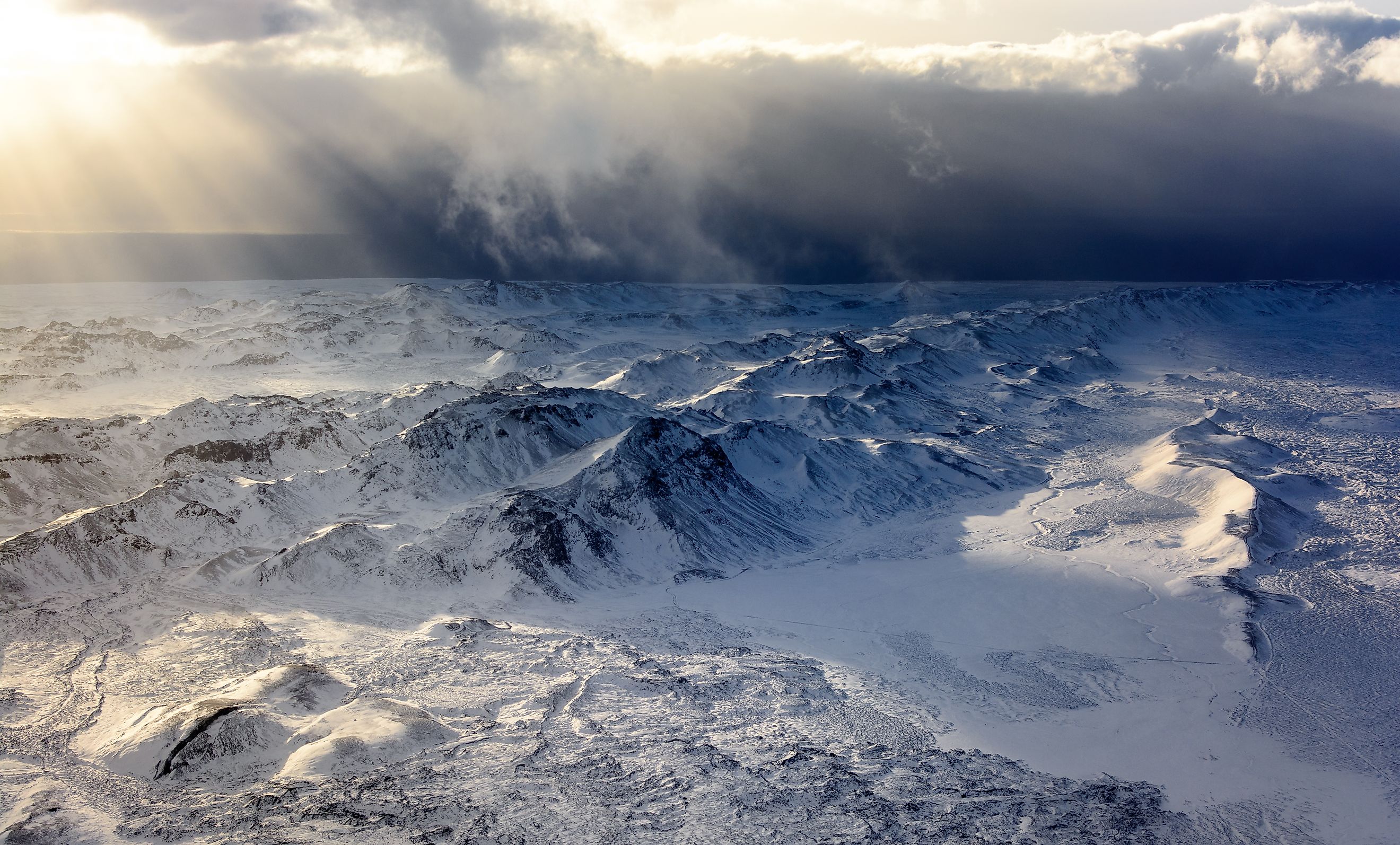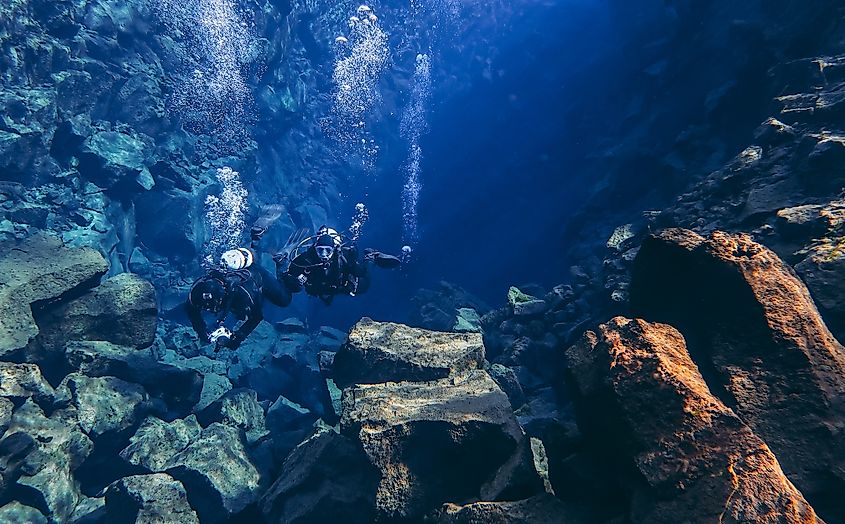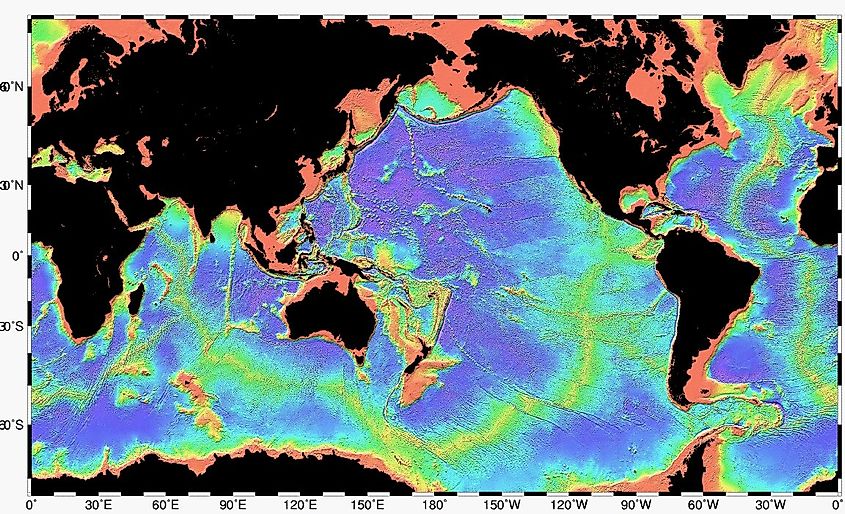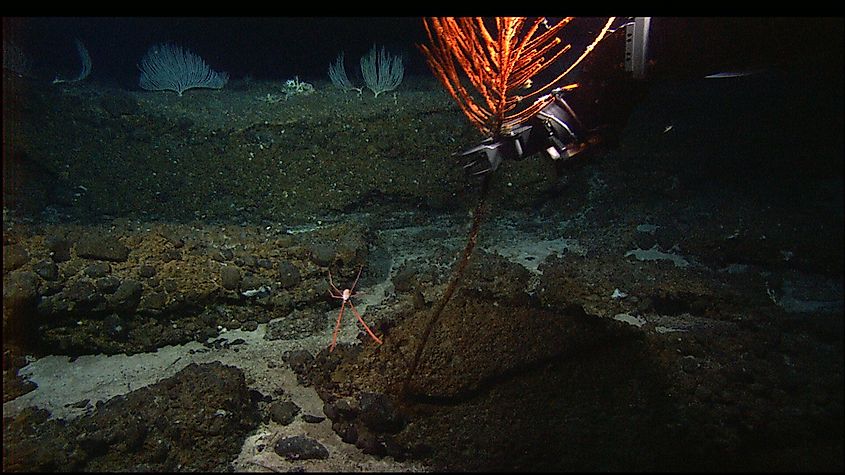
The Longest Mountain Range on Earth is Underwater
Among the most awe-inspiring features of our planet's topography is the Mid-Ocean Ridge, an extensive underwater mountain range that spans the globe. This colossal geological formation, stretching approximately 65,000 kilometers (40,390 miles), surpasses any terrestrial mountain range in both length and complexity.
Serving as a critical component of the Earth's lithosphere, the Mid-Ocean Ridge plays a fundamental role in the process of plate tectonics, influencing the creation of new oceanic crust and the distribution of seismic activity.
What is the Mid-Ocean Ridge?

The Mid-Ocean Ridge is an extensive, continuous mountain range located under the ocean, stretching across the globe, generally through the center point of all major oceans. It is technically the longest mountain range in the world.
This underwater geological feature is fundamental to the functioning of the Earth's tectonic plates. The Mid-Ocean Ridge is formed by the process of the seafloor spreading where tectonic plates once converged. Here, two tectonic plates move apart, allowing magma from the mantle to rise and solidify into a new oceanic crust, kind of like slitting open a stress ball and watching the goo inside burst out, except in this case, the goo is superheated and turns into rock. This process occurs along the ridge's crest, where a central valley marks the location of active spreading. The continuous addition of new material at these divergent boundaries pushes the older crust away from the ridge, contributing to the movement of tectonic plates, very much like how mountains are formed on land.
The Mid-Ocean Ridge system winds through five major oceans: the Atlantic, Indian, Southern, and Pacific. Notable sections of this system include the Mid-Atlantic Ridge, the East Pacific Rise, and the Indian Ocean Ridge. The Mid-Atlantic Ridge, for instance, extends from the Arctic Ocean down to the Southern Ocean, passing through the middle of the Atlantic Ocean, and is the most well-known segment.
What is the Highest Point of the Mid-Ocean Ridge?
The highest point of the mid-ocean ridge is in the Atlantic Ocean, along the aptly named "Mid-Atlantic Ridge." The crest of the Mid-Atlantic ridge actually emerges above the water's surface on Jan Mayen island in Norway, where the Beerenberg stratovolcano reaches 7,470 feet above sea level.
For an easier view of this ridge on land, visit Þingvellir (Thingvellir) National Park in Iceland, just a short drive north of Reykjavik. Now a UNESCO World Heritage Site, this lush park, is full of waterfalls, grasslands, and a ridge outlining the two plates that meet in this exact location, plates which eventually run north to their peak on Jan Mayen.
What this Unique Geological Formation Teaches Us About Our Planet

The Mid-Ocean Ridge is crucial for understanding the mechanics of plate tectonics and seafloor spreading. The alternating patterns of magnetic anomalies found on either side of the ridge provide evidence of periodic magnetic field reversals and help date the age of the oceanic crust. This process is central to the theory of plate tectonics, explaining the movement of Earth's lithospheric plates.
What Lives on These Underwater Ridges?

Hydrothermal vents along the Mid-Ocean Ridge support unique ecosystems that thrive in extreme conditions. These vents emit mineral-rich water, sustaining diverse communities of fish, crustaceans, bacteria, and other organisms adapted to high temperatures and pressures. These ecosystems operate on chemosynthesis, a process where bacteria convert chemicals from the vents into energy, forming the base of the food web.
Understanding the Mid-Ocean Ridge's Global Impact
The Mid-Ocean Ridge plays a vital role in Earth's geophysical and biological systems. It is a major zone of heat loss from Earth's interior, influencing oceanic and atmospheric circulation patterns. The tectonic activity along the ridge is also a source of frequent, though generally small, earthquakes.
The Mid-Ocean Ridge is a significant and dynamic feature of Earth's crust, integral to the processes of plate tectonics and seafloor spreading, and home to unique biological communities.











